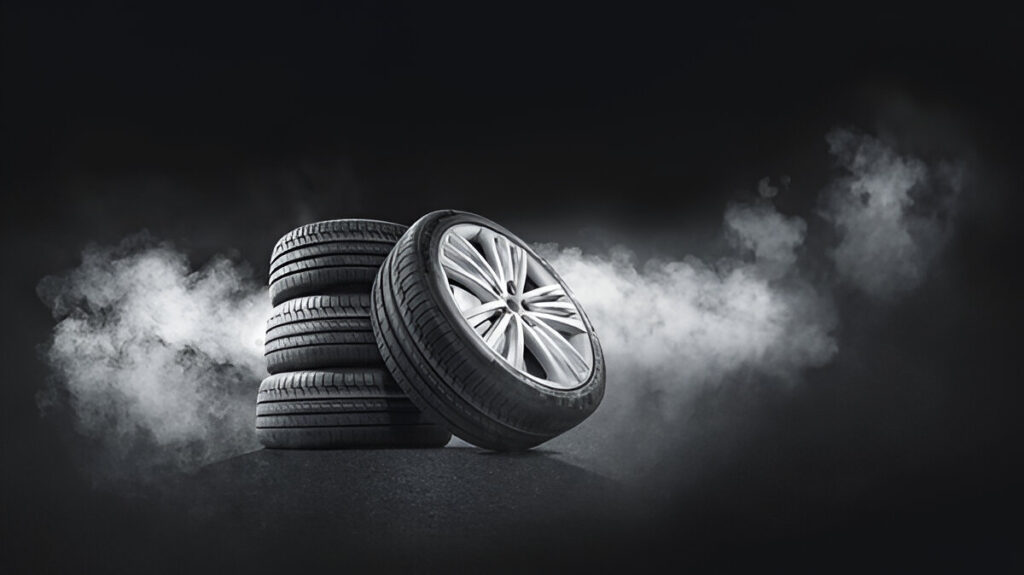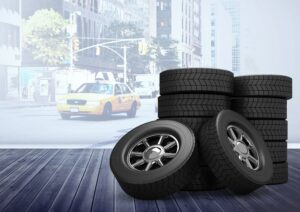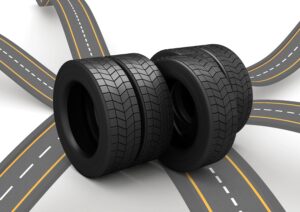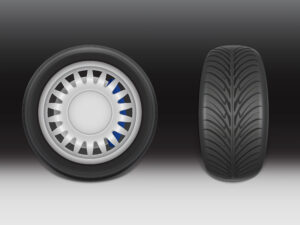How to Read Tyre Size: A Complete Guide to Decoding Tyre Markings and Labels

Understanding how to read tyre size is an essential skill every vehicle owner should possess. Tyre sizes are marked with a combination of numbers and letters, which can seem confusing at first glance. However, once you know what each part of the tyre size represents, reading and interpreting them becomes much easier. This guide breaks down each element of a tyre size and explains why it’s important to ensure that your tyres match the specifications required for your car. Whether you’re replacing a worn-out tyre or choosing a new set, how to read tyre size will help you make an informed choice that supports your vehicle’s performance, safety, and fuel efficiency.
Understanding Tyre Markings: Decoding the Numbers
Every tyre comes with specific markings that tell you the key details about its size and performance. Here’s a breakdown of the typical tyre size format:
Example Tyre Size: 215/60R16 95H
1. Tyre Width
The first number (e.g., 215) represents the tyre width, which measures the distance from side to side of the tyre in millimeters. A tyre with a width of 215mm provides good grip and traction for most standard vehicles. How to read tyre size involves understanding that wider tyres generally offer better grip but may affect fuel efficiency.
2. Aspect Ratio
The next number (e.g., 60) is the aspect ratio, which is the height of the sidewall as a percentage of the tyre’s width. In this case, the aspect ratio is 60%, meaning the sidewall height is 60% of 215mm, or 129mm. A lower aspect ratio, like 50, indicates a shorter sidewall, which can improve handling but might give a harsher ride.
3. Construction Type (R)
The “R” in the tyre size stands for Radial construction, which is the most common construction type used for tyres. Radial tyres are designed for durability and provide a smooth ride. How to read tyre size requires understanding the construction type to ensure you choose the correct tyre for your driving needs.
4. Rim Diameter
The number after the construction type (e.g., 16) represents the rim diameter in inches. This is the size of the wheel that the tyre fits. When you’re reading tyre size, ensure that the rim diameter matches the wheel size of your car.
5. Load Index and Speed Rating
The last part of the tyre size code consists of a load index (e.g., 95) and a speed rating (e.g., H). The load index indicates the maximum weight the tyre can carry, while the speed rating tells you the maximum speed the tyre can safely handle. The load index (95) corresponds to a weight capacity of 690 kg, and the speed rating (H) means the tyre is rated for speeds up to 210 km/h.
Importance of Tyre Size in Vehicle Safety and Performance
How to read tyre size is essential not only for understanding the fit but also for ensuring that your vehicle remains safe and performs optimally. Incorrect tyre size can have a direct impact on your car’s handling, braking, fuel economy, and overall safety.
Tyre Size and Performance
Larger tyres can improve traction and handling, especially on performance-oriented vehicles. On the other hand, smaller tyres can provide better fuel efficiency and a smoother ride. It’s important to understand how to read tyre size to ensure that you’re selecting tyres that meet the needs of your driving conditions and vehicle model.
Tyre Size vs Car Model
Different car models require different tyre sizes. A high-performance sports car might need wider tyres with a low profile for improved cornering, while an SUV might require larger tyres for off-road capability. When learning how to read tyre size, always compare the specifications with your car model to ensure compatibility.
Guide to Reading Tyre Codes
Decoding the tyre code is a crucial part of understanding how to read tyre size. The numbers and letters provide vital information about your tyre’s characteristics, which directly affect how your car drives.
- Start with the Tyre Width: The first number in the tyre code indicates the width of the tyre, in millimetres, from one sidewall to the other.
- Aspect Ratio: The next number tells you the height of the sidewall as a percentage of the width. The lower the number, the shorter the sidewall.
- Construction Type (R): The “R” stands for radial, indicating the construction type of the tyre. Radial tyres are designed to provide a smooth and comfortable ride.
- Rim Diameter: This number shows the diameter of the wheel in inches that the tyre is designed to fit.
- Load Index and Speed Rating: The load index indicates the maximum weight the tyre can support, while the speed rating tells you the maximum safe speed.
Decoding Tyre Labels
When you read tyre size, you’ll also come across tyre labels that contain additional information. These labels may include:
- Manufacturing Date: A four-digit code (e.g., 0418) that tells you the week and year the tyre was made.
- Treadwear Rating: This indicates how long the tyre’s tread will last under normal driving conditions.
- Wet Grip Rating: This rating shows how well the tyre performs in wet conditions, which is essential for safety.
By understanding how to read tyre size and interpreting these additional markings, you ensure you select the best tyres for your needs.
Correct Tyre Size Selection
Selecting the right tyre size involves more than just reading the markings on the sidewall. Here are some essential tips for choosing the correct tyre size for your vehicle:
- Check the Owner’s Manual: The first step in how to read tyre size is consulting your car’s owner’s manual. This will provide the exact tyre size recommended by the manufacturer.
- Consider Your Driving Conditions: Your driving habits and road conditions will affect the tyre size you need. Off-road vehicles typically require larger, more rugged tyres, while city cars may benefit from smaller tyres for better fuel efficiency.
- Consult an Expert: If you’re unsure about the right tyre size for your vehicle, don’t hesitate to ask a tyre professional. They can help you choose the right tyres based on your driving needs and car model.
Conclusion
Understanding how to read tyre size is essential for ensuring that your vehicle remains safe, performs well, and operates efficiently. By following this guide and considering the various elements of tyre size, you can confidently select the best tyres for your car. Remember, how to read tyre size isn’t just about numbers – it’s about understanding what each part of the tyre marking means and how it impacts your vehicle’s performance.
If you’re ready to upgrade or replace your tyres, visit KwikFix Auto for expert guidance and the best tyre options. Check out KwikFix Auto Tyres to find the perfect tyres for your vehicle today!
Frequently Asked Questions (FAQs)
Q1. What do the numbers on my tyre mean?
A1. The numbers on a tyre indicate its width, aspect ratio, construction type, rim diameter, load index, and speed rating. For example, a tyre size of 215/60R16 95H tells you that the tyre is 215mm wide, with an aspect ratio of 60%, radial construction, designed for a 16-inch rim, with a load index of 95 and speed rating H.
Q2. How can I tell if I have the right tyre size?
A2. To determine if your tyres are the right size, refer to your vehicle’s manual or check the tyre placard on the driver’s door frame for the recommended size. Make sure the size matches what is indicated for your car’s specifications.
Q3. Can I fit larger tyres on my car?
A3. You can fit larger tyres, but it’s important to ensure they fit the wheel wells and don’t interfere with the suspension. Larger tyres can affect handling, fuel economy, and performance, so be sure to choose the correct size for your driving needs.
Q4. How do I decode the speed rating and load index?
A4. The speed rating (e.g., H) and load index (e.g., 95) are found at the end of the tyre size code. The speed rating indicates the maximum speed the tyre can safely handle, and the load index tells you the maximum weight the tyre can support.
Q5. What’s the difference between radial and bias-ply tyres?
A5. Radial tyres have layers of fabric running perpendicular to the tyre, offering better durability, comfort, and performance. Bias-ply tyres have layers crisscrossing at an angle and are typically used in older vehicles or for specific applications.
Q6. How do I choose the right tyre for my vehicle?
A6. Start by consulting your car’s manual for the recommended tyre size. Then, consider your driving habits, road conditions, and the climate you live in. Always ensure the tyres you select match the specifications for your vehicle.
Q7. Can tyre size affect my car’s fuel economy?
A7. Yes, tyre size can affect fuel economy. Larger tyres typically increase rolling resistance, which can reduce fuel efficiency. Smaller tyres, on the other hand, tend to provide better mileage.
Q8. Why is it important to match the tyre size with the car model?
A8. Matching the tyre size with your car model ensures that the tyres fit correctly and perform as intended. Incorrect tyre size can affect handling, braking, and safety.





